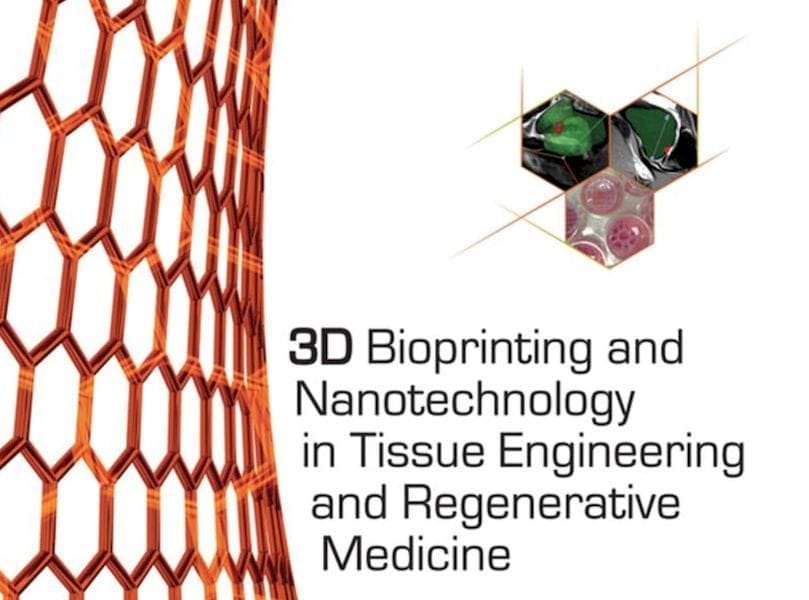
This week’s selection is “3D Bioprinting and Nanotechnology in Tissue Engineering and Regenerative Medicine” by Lijie Grace Zhang, John P Fisher, and Kam Leong.
Bioprinting is certainly one of the more exotic uses of 3D printing and is significantly different than 3D printing parts, art or food. While the basic principles of printing are similar between these, including printing by layers, material extrusion and 3D designs, bioprinting is in a class of its own for operational details that lead to successful prints.
In addition to the 3D bioprinting aspects, the book also covers nanotechnology applications, which, we are told, can “increase the clinical efficiency of prosthesis or artificial tissues made by bioprinting or biofabrication.”
Beginning with a detailed explanation of the unusual materials used in bioprinting and the scaffold process of printing regenerative tissues, the book quickly moves on to exploring a very wide selection of specific 3D printing processes and equipment that could conceivably be used for bioprinting. Some of these techniques I’d never heard of previously, such as “Matrix-assisted Pulsed Laser Evaporation Direct Writing”, or “Laser-Induced Forward Transfer”. For each the authors explain the benefits and challenges.
Considerable pages are spent discussing the software and design aspects of bioprinting and tissue engineering, as those are certainly as critical as the printing process itself.
A number of very specific application areas are explored in detail, such as:
Blood vessel regeneration
- Patterning vasculature
- Craniofacial
- Dental tissue
- Craniofacial bone
- Bone load-bearing applications
- Cartilage
- Skin printing
- Neural tissue regeneration
- Organ printing
Finally, a number of pages are dedicated to exploring the regulatory and intellectual property aspects of bioprinting, as the power of the technology tends to enable scenarios not previously encountered. They seem to focus on identifying possibilities for legally protecting procedures developed using these techniques, which could in future generate revenue and thus promote the development of new approaches.
Bioprinting is not for everyone, and indeed is in the realm of medical specialists on the cutting edge of the science. But if that’s a position you hold, this book may be of considerable interest.
Via Amazon











FELIXprinters has released a new bioprinter, the FELIX BIOprinter, which is quite a change for the long-time 3D printer manufacturer.